Where the Past Passes By
Here you can see a unique project; the creation of a museum of street transport designed to show the development of mechanical transport over the best part of a century. The essence of transport is movement, so we are building a living museum where vehicles of yesteryear can be seen in action, where half-forgotten sounds of the past are brought back to life and where visitors can journey back in time by travelling on a few of the exhibits along the Museum’s streets. Many old vehicles seem ill at ease in a rural environment, so our aim is to develop a street scene of houses and shops, complete with authentic street furniture of bygone days, rescued by us from many parts of the country.
At Carlton Colville we have one of the widest ranges of preserved vehicles of any museum, and further exhibits are still accepted from time to time, although restrictions on covered accommodation necessarily confine these mainly to items of local or specific historic interest.
Our story began back in 1962 when four local tramway enthusiasts rescued the body of an old Lowestoft tramcar, no. 14, from its use as a summerhouse at Gunton. From this grew the idea of forming a transport museum, and as a result the East Anglia Transport Museum was founded on its present site in 1965. A Society was formed with the object of developing and running the Museum and started off with a few old vehicles which had been either donated or loaned, but with no other assets whatsoever. The huge task lay ahead of transforming a disused meadow,into a museum with depots, stores, workshops, administrative offices, refreshment facilities and toilets, not forgetting roads, tram tracks, overhead wiring for trams and trolleybuses, and a light railway.
The Museum is fully registered and has charitable status. Whilst it serves principally as a major tourist attraction in Waveney, great emphasis is also placed on its educational role. There is a chance to travel on types of vehicles now half forgotten, and you are free to wander around the Museum site or to take a stroll along our woodland path to the tram terminus at Hedley Grove.Other amenities include our shop, which is particularly well stocked with books and souvenirs, and the Terminus Tearooms where light refreshments are reasonably priced and ice cream and soft drinks are always available.
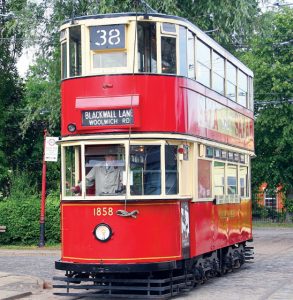 |
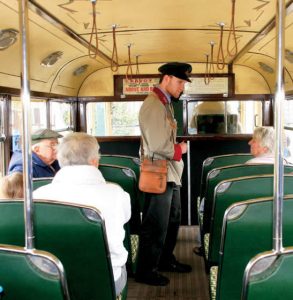 |
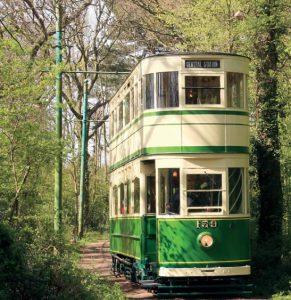 |
The Site
The museum’s compact site is a veritable treasure trove of discovery and provides a suitable backdrop in which to operate and display our collection of vehicles. From dense woodland to a full width roadway complete with authentic street furniture not an inch of precious space is wasted.
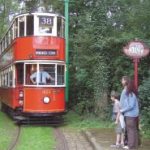 |
The Tramway
The museum is very fortunate to have a tramline that is relatively compact and easy to manage, whilst being long enough for our visitors to fully appreciate a ride by vintage tram. After travelling along the museum street, trams turn off onto our wonderfully atmospheric woodland tramline, terminating at Hedley Grove picnic area. Visitors may return to the museum on either the same or another tram, or take a leisurely stroll along the woodland path, from where unique views of the trams in a woodland setting can be seen. |
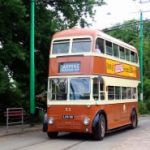 |
The Trolleybus Route
On 10th January 1971 history was made when London Transport trolleybus 1521 was the first of its kind to run under trolleybus overhead in a museum anywhere in the country. Now the museum circuit is probably the most complex of its kind in the country, in terms of the number of possible movements constrained by overhead wiring. In July 2008 the amount of roadway available for trolleybus operation was almost doubled, allowing a circular route around the site to be taken. Additionally, the museum has always been known among enthusiasts as the ‘home’ of the preserved London trolleybus, with No’s 260, 796, 1201 and 1521 in residence. |
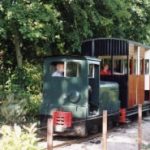 |
The East Suffolk Light Railway
This is the title given to our 2ft gauge railway which opened in 1973 to recreate a typical light railway of years gone by. It winds its way along the northern perimeter of the Museum between the main station at Chapel Road, and Woodside, the furthest point of the trolleybus route. Motive power is provided by two Simplex industrial locos, previously working at Duxford Imperial War Museum, and a Ruston engine, which prior to its work at the museum, was in use with Portland Cement at Lewes, Sussex. In addition is a 1934 Simplex loco which came to the museum from the King’s Lynn quarry of British Industrial Sand. Passenger rolling stock comprises an 18 seat enclosed bogie carriage built on a chassis that is now over 100 years old, and a four-wheeled brake van, built on what used to be a 1934 Simplex loco. The railway is home to some of our most interesting large-scale artifacts’ including the only remaining piece of the 3ft gauge Southwold Railway closed in 1929 – a luggage van originally built in 1885. |
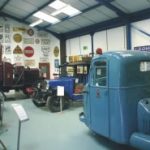 |
Exhibition Halls
The museum has a number of exhibition halls filled with historic vehicles and artifacts where visitors can come and view part of our extensive collection. With displays focussed on cars, commercial vehicles, electric vehicles and steam, there is surely something to interest everyone. In addition, visitors are free to view many of the operational vehicles in the museum fleet in the three main depots, as well as seeing first hand vehicle restorations that are currently underway. |
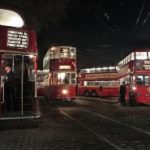 |
The Museum Street
All trams and trolleybuses start their journey at Chapel Road Terminus before transporting visitors along the various parts of our custom-built road network. The museum has collected relevant items of street furniture (including post boxes, phone boxes, street lamps etc) since the beginning and the aim is to show our vehicles operating in an environment that is both interesting and appropriate. There are many photographic opportunities around the site and the change in the sun’s direction over the day means there are always new angles to be explored. |
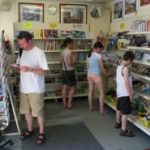 |
Cafe & Bookshop
The museum’s cafeteria is aptly named ‘Terminus Tearooms’, just the place to pop into to take a break whilst enjoying our range of hot & cold drinks and light snacks either before or after you tour the museum. On warm sunny days you can dine al fresco at a specially designated area opposite the ‘Tearooms’ or you can enjoy your picnic in’ Paul George Burgess Park’ watching the museum activity pass on either side. Opposite the ‘Tearooms’ is our ‘Acacia’ store, a very well stocked gift shop which has various books,models and many other gifts to suite all ages and all at very reasonable prices. Please remember that only guide dogs are permitted in the bookshop and cafeteria. |
Our Vehicles
The museum has a diverse and ever expanding collection of historic and interesting vehicles. Whilst the most numerous of these are our fleets of trams, trolleybuses and buses, we also have a number of commercial vehicles, cars and steam vehicles, not forgetting the narrow gauge rolling stock that is in use on the East Suffolk Light Railway. Whilst it would be impossible to provide full details of every vehicle in the collection, below you will find a fleet list that is kept up to date giving the basic information about the vehicles that we own and care for. Please remember that you may not see all of these vehicles on a visit to the museum as at any one time there are always some that are away for restoration, repair, storage or are representing the museum at local community events and national rallies. If you have a special interest in seeing a particular vehicle you are invited to contact us before you visit so that we may let you know its current status.
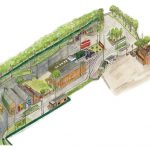
Download Site Layout Map |
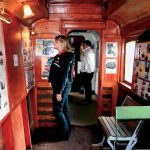
Download Our Leaflet |
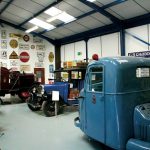
Download Vehicle List |
